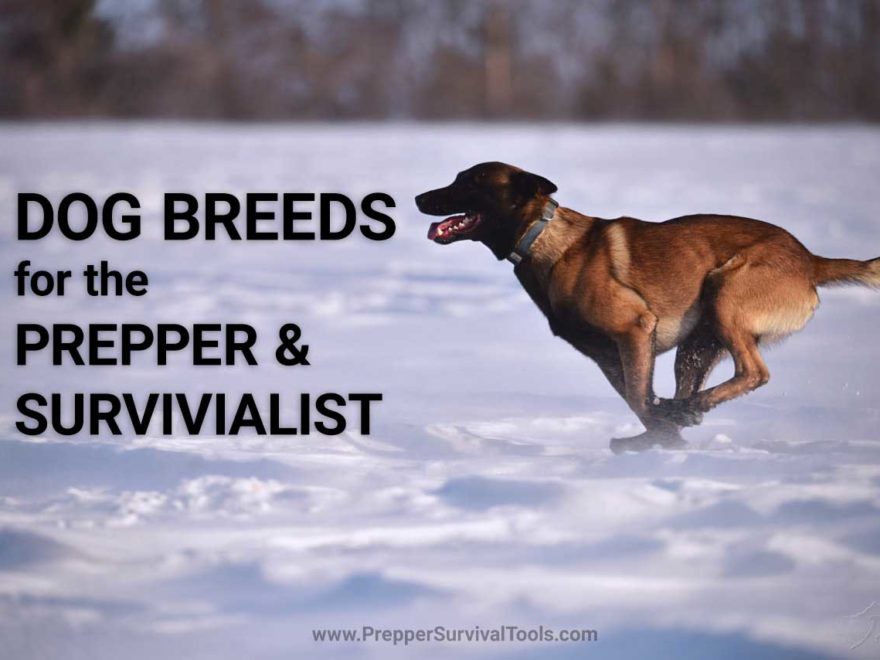As an author, I often do a quick online search on what’s already out there before writing an article. And if there’s already some good stuff out there, I’d be hesitant to write something the similar, unless I think I have something valuable to add. In this case, I felt I had to a lot of value to add to preppers and survivalists looking for the right dog breed for them.
Why am I writing this article?
In this case, when I did a Google search on “dog breeds for preppers” there was quite a big bunch of articles out there on dog breeds for preppers or survivalists. However, most of them didn’t really seems to be written by some who has really owned, raised and worked with dogs. I’d suspect that a lot of these articles were hastily whipped up with copious copy-and-pasting from other internet sources. Possibly, these articles were even outsourced to some college kid in the third world. I think lots of these articles were written by someone without a deep knowledge on and passion for dog breeds.
Guess what? I’ve owned and raised a number of the dog breeds I discuss in this article and know a lot of guys who owned the other breeds discussed here. I’ve had one or more of the following breeds: Rottweiler, American Pit Bull Terrier, German Shepherd, Belgian Malinois. And, I’ve had a bunch of other breeds not discussed here. I’ve been active in dog communities for many years now. So no, this isn’t an outsourced article or an article I recycled from other stuff out there on the net. You’re getting the real deal.
What can I say about articles about the “Best Dog Breeds”?
First of all, I think articles about the best dog breed are a load of hullabaloo. While they are catchy to they eye, they’re the article equivalent of junk food. Nice and tasty to read, not a lot of real value. There is no such thing a best dog breed. The best dog breed will depend on you. As a prepper or survivalist, each of us will have different situations. What’s the climate like in your area? Is it cold and snowy? Is it an arid region? Will it be a compact urban environment? Or will you be doing lots of roaming in the rural areas or out in the woods? Are you bugging out or digging in? Do you have any specific task that you want the dog to do, like herding, hunting, guarding, or personal protection? There are lots of factors you might want to consider before choosing a breed.
Before choosing a breed or getting a dog
If there is one thing I want you to remember about choosing a dog, it’s this: The breed provides the genetic foundation. However, the training it receives and the environment is raised in is what will mould your dog from a miserable, noisy animal to a valuable member of your prepper and survival group. I want you to remember this so much, I put it in bold type face.
So if you’re thinking about buying a dog for your prepper plans, don’t just get carried away by visions of yourself walking the wastelands with a trusty companion like in “I am legend”. But sure you have a plan on how to raise the dog properly, and what to do. Be sure every
Think about adopting from a shelter, if your main purpose of getting a dog is not a specific task, but just a general dog to warn you at the approach of strangers and other dangers, any dog, regardless of breed will be able do this well.
How I came up with this List of Dog Breeds for Preppers and Survivalists
There are hundreds of dog breeds and it’s practically impossible to have good knowledge of each breed in the world. I first took stock of the most common dog breeds found in the US according the statistics of the American Kennel Club (AKC). Then I included breeds non-recognized by the AKC extremely rare breeds but I believe deserved a closer look.
I then considered the various variations in the conditions and situations a prepper or survivalist might face in a SHTF or post-collapse of civilization situation. Bugging-out vs digging-in. Cold climates vs arid vs tropical climates. Urban vs rural. I considered also the care required, such as for grooming, food, exercise (for those breeds I selected for those digging-in), and sociability. I tried to include dog breeds best suited for the various combinations of these conditions.
I used the ranking list of the intelligence of dog breeds from Stanley Coren’s highly-acclaimed book Intelligence of Dogs. This list ranks dogs not only by overall intelligence, but by type of intelligence, namely: instinctive, adaptive, and working and obedience.
I lastly drew upon my own personal experience and the experience of dog experts who have practical working experience with dog breeds.
The Dog Breeds for Preppers and Survivalists
Are you bugging-out to leave everyone behind as they fight over resources? You’ll need a companion on the road. Are you digging-in and keeping the guns ready? The sharp ears and nose of a dog will make sure no one sneaks up on you or your home? Will you take your chances in the city, where muggers, robbers are murderers? A ferocious canine friend on your side will attack your foes without fear. Without further ado, here is the list. I hope you can find one just for your situation.
Belgian Malinois
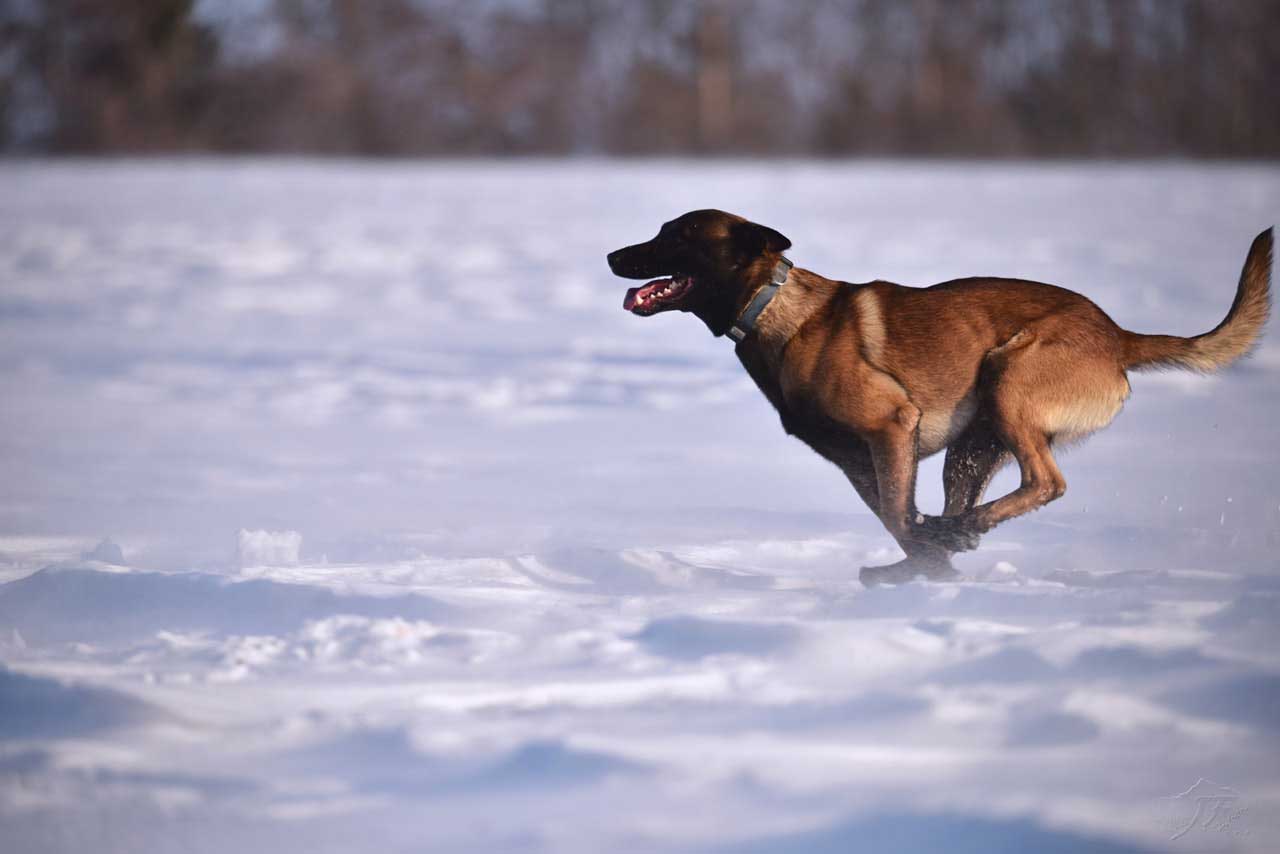
I find that Belgian Malinos dogs are the perhaps the best dogs in terms of overall versatility as working dogs. Belgian Mallinois are know for their infallible obedience and extremely high energy levels. They tend to be even more hyperactive than German Shepherds, which are already known for being quite high energy dogs.
I personally a fond of Beligian Mallinois since they do well in tropical or arid climates. The have short coats which allow them to work in hot, humid weather. Because of this short coat, they might not fare as well in cold weather as a thick-coated German Shepherd would. I’ve even seen lines of Belgian Malinois with very slim bodies that would be an advantage in hot, humid weather. If you live in the Northern parts of the US, you might want to stick with German Shepherds. Meanwhile, those living down South or in hotter weather might consider a Belgian Malinos.
With a large part of America turning into a desert in the next coming decades, this breed may be a good choice for you. Especially in urban areas in warmer regions, temperatures can soar during the day. Dogs can’t cool themselves as well as humans. (The ability to keep cool is an evolutionary advantage of humans). If you need a companion during the day, such as during foraging out in a hot abandoned city you can consider a Belgian Malinois. In post-apocalyptic, or near collapse scenario, going out at day can have a lot of advantages to going out at night when it’s a lot more dangerous. In scenarios like this, you will need a dog that can withstand as much heat as possible.
German Shepherd
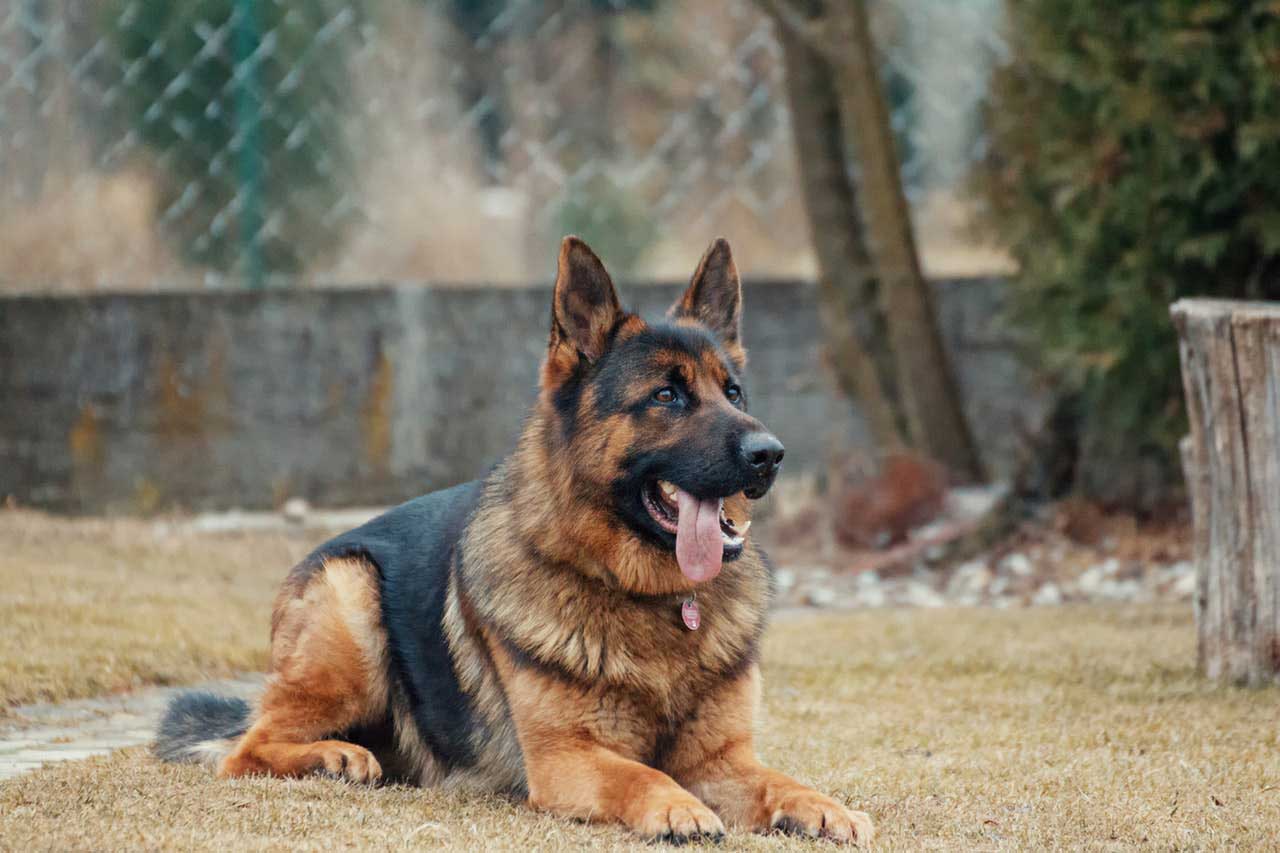
One of the most popular breeds of dogs worldwide, justly so because of its many good qualities is the iconic German Shepherd, or GSD (German Shepherd Dog). It is currently the second most popular dog breed in the United States, and is used as both a companion and a working dog. They are known for being fiercely loyal, intelligent and brave. The official breed standard or description of them as having a “certain aloofness that does not lend itself to immediate and indiscriminate friendships.”
Take note that lately, overall, there are lines of German Shepherds are developing: show type and working type. Not all owners will be aware of what kind of German Shepherds they have, and the line between the two may not always be distinct, but they can be told apart with some practice.
The show-type german shepherds tend to have more slopping backs, which makes them more desirable by breeders for dog shows. Show-type German Shepherds will have the typical markings for their breed, such as the black back. You should be careful with getting German Shepherds breed for dog shows. Being a dog show champion doesn’t necessarily mean they are good working dogs. (I’m referring to dog shows where dogs are judged for their look and health, not the dog contests where dogs compete on their working abilities.) The slopping backs of some show-type GSDs can make them less athletic than their working-type counterparts, and makes them more susceptible to developing hip dysplasia, a debilitating disease affecting their ability to walk, as they age.
Meanwhile, working-type German Shepherds are bred for working, such as personal protection, bomb sniffing or herding. Working-type GSDs might not have the well-defined typical distinct german shepherd markings. They may be more blackish or greyish than German Shepherds raised for dog show competitions. They also tend to be build more balanced and more squared, with more square, higher hips, giving them maximum athleticism. Most working-type German Shepherds will have the typical german shepherd markings, so don’t discount a GSD as not being a working-type just because it has the typical German Shepherd markings. Remember that all German Shepherds came from the same stock that was developed in the late 1800’s for herding sheep.
I have noticed that German Shepherds don’t do well health-wise in tropical countries compared to other working breeds. The heat and humidity of a tropical climate tend to make them quite miserable throughout they day. Some GSDs are considered being “double-coated” or having thick coats. Some vets consider them vulnerable to tropical diseases, such as heartworm, a mosquito-borne blood parasites. While it is possible to raise them in a tropical country, they will not reach their full-potential.
German Shepherds are one of the most versatile dog breeds you may own as prepper. Whether you are bugging-out or digging-in, especially for those living in temperate or slightly colder regions, they can be of great value. GSDs can do quite well in colder weather, especially those with thicker coats. They will do best in an outdoor environment but can be raised well in an urban environment as well, as long as it can get enough exercise and you can keep your environment clean.
They are very valuable for preppers and survivalists due to their trainability in personal protection. If trained properly, they will defend you when they sense you are in trouble. They are one of the few breeds you can count on to attack an assailant if provided with the proper training. With their exceptional intelligence, they will be able to adapt to wide range of situations.
Alaskan Malamute
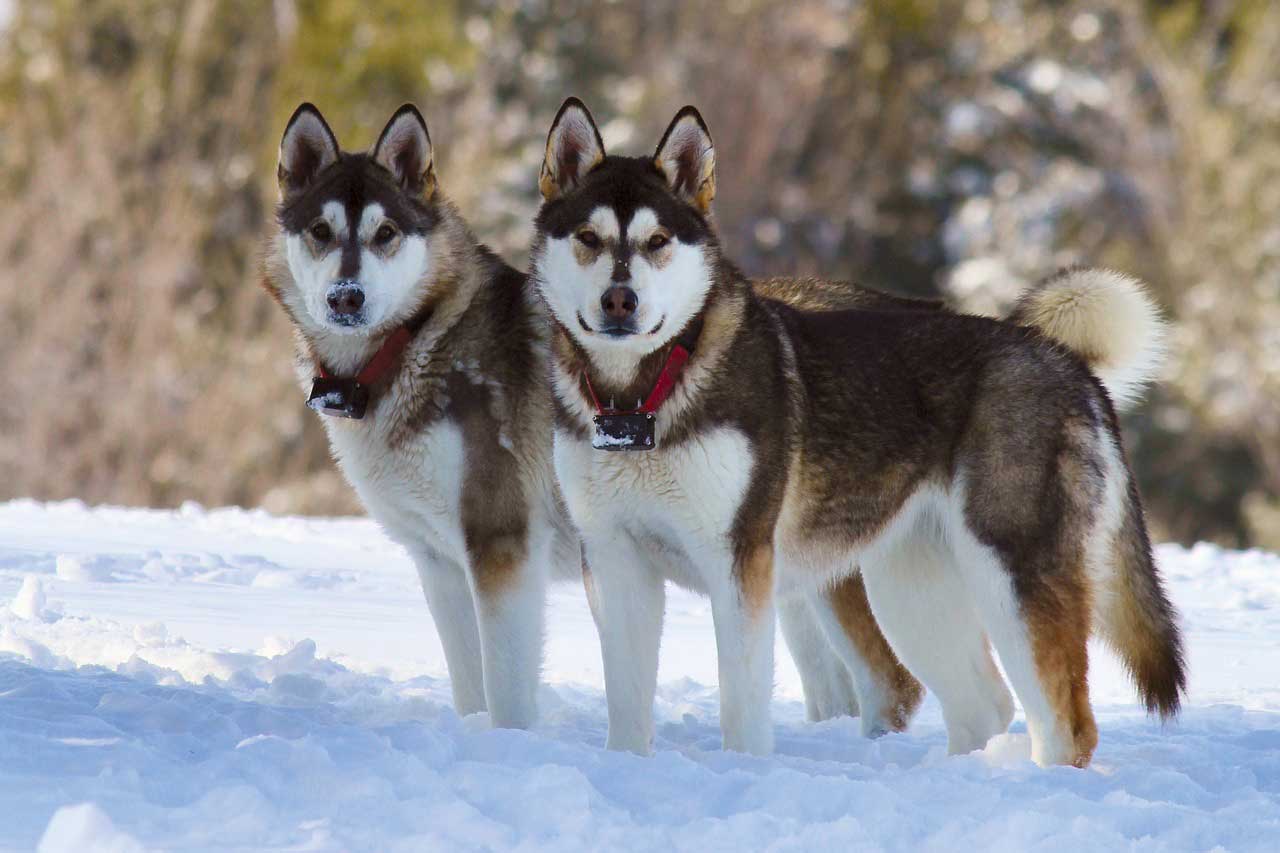
Alaskan Malamutes will be an asset for you if you reside in the colder climes. Alaskan Malamutes are often confused with Siberian Huskies. They’re easy to tell apart with a little familiarization. I’m choosing Malamutes over Siberian Huskies due to difference in their temperament and functions. Malamutes are compared to Huskies are brutes when it comes to pulling loaded sled, such as what you would need in moving camp or supplies. Meanwhile, Huskies tend to have been bred for speed in sledding. Malamutes tend to have a stronger loyalty to their owners. Siberian huskies are much more independent, and are less attached to their owners.
Malamutes can be trained to carry loads on their backs, with loads of 30% of the dog’s body weight recommended that a dog can carry the whole day. This would mean that an Alaskan Malamute of around 90kg would be able to carry 30 pounds of gear a day. If you train Malamute for sledding, you could use the dog to pull around 1,000 pounds of gear. That would be perfect for moving camps or long bug-outs into a cold, white wilderness.
Take note thought it normally takes an extended period training to bring a Malamute up to this endurance and strength level. If you already own an Alaskan Malamute, don’t just suddenly load it up with weight. It’s recommended to start a Malamute with 1/8th of its bodyweight and slowly build it from there with constant exercise.
They may not have the raw aggression of a GSD or a Belgian Mallinois, so it might be difficult to train an Alaskan Malamute for personal protection the way you would the former. They can but might not as easily be trained as attack dogs to charge, tackle and bite a foe. However, they still can be valuable for self-defense. The Inuit people, or Eskimos, have used them in bear hunting, keep the bears at bay. In the same way, they could protect you from large predators, where bear or human kind, in a post-collapse scenario. Your Alaskan Malmute could keep the an intruder at bay, giving you the time to take aim at center mass and get good shots in.
For those who are planning on bugging-out into the cold, an Alaskan Malamute may be the right choice. A prepper bugging-out into a cold environment will usually bring a lot of gear with him. In this case, they would be perfect for moving camps pulling a loaded sled.
Rottweiler
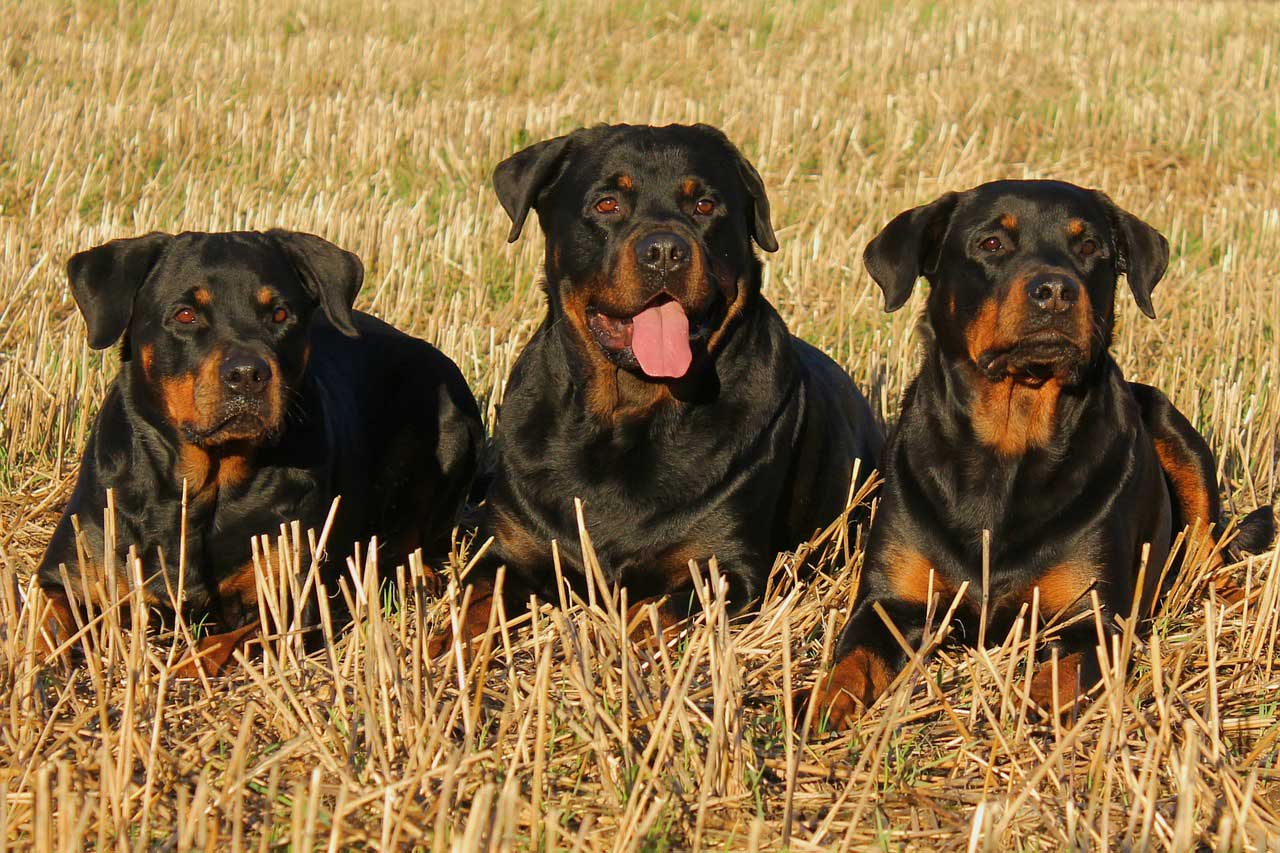
Rottweilers were bred originally breed to drive livestock, especially before the the time of stock cars, and pull carts. In Germany they are known as Rottweiler Metzgerhund, meaning Rottweil butchers’ dogs as they were popular with butchers. This breed has been developed over centuries, and are said to have been brought over by Roman Legions to the town of Rottweil in Germany. Today, they perform numerous tasks, including personal protection and police work.
They are good family dogs and will work well whether in an urban or rural setting. They tend to be territorial towards other dogs and strangers, which can be positive for preppers and survivalists. They are lower energy as they grow older, which can be good for those of us who are putting on the years. I have found that if they are socialized and exposed to children from very early on, can be tolerant of them.
Rottweilers may be of interest to you if you want to out them to work as a carting dog. These dogs can pull carts or even carry loads on their backs with a dog backpack. If trained properly, Rottweilers can also be a great asset for personal protection. Among personal protection dog trainers, Rottweilers are known for their ferocity and crushing bite strength. With their large muscular build and body mass, they will be able to effectively neutralize the strongest assailants.
They do tend to have large appetites, which may be one thing to consider for post-collapse situations. Buy if you will be able to provide from them, there is much they can contribute in return.
American Pit Bull Terrier
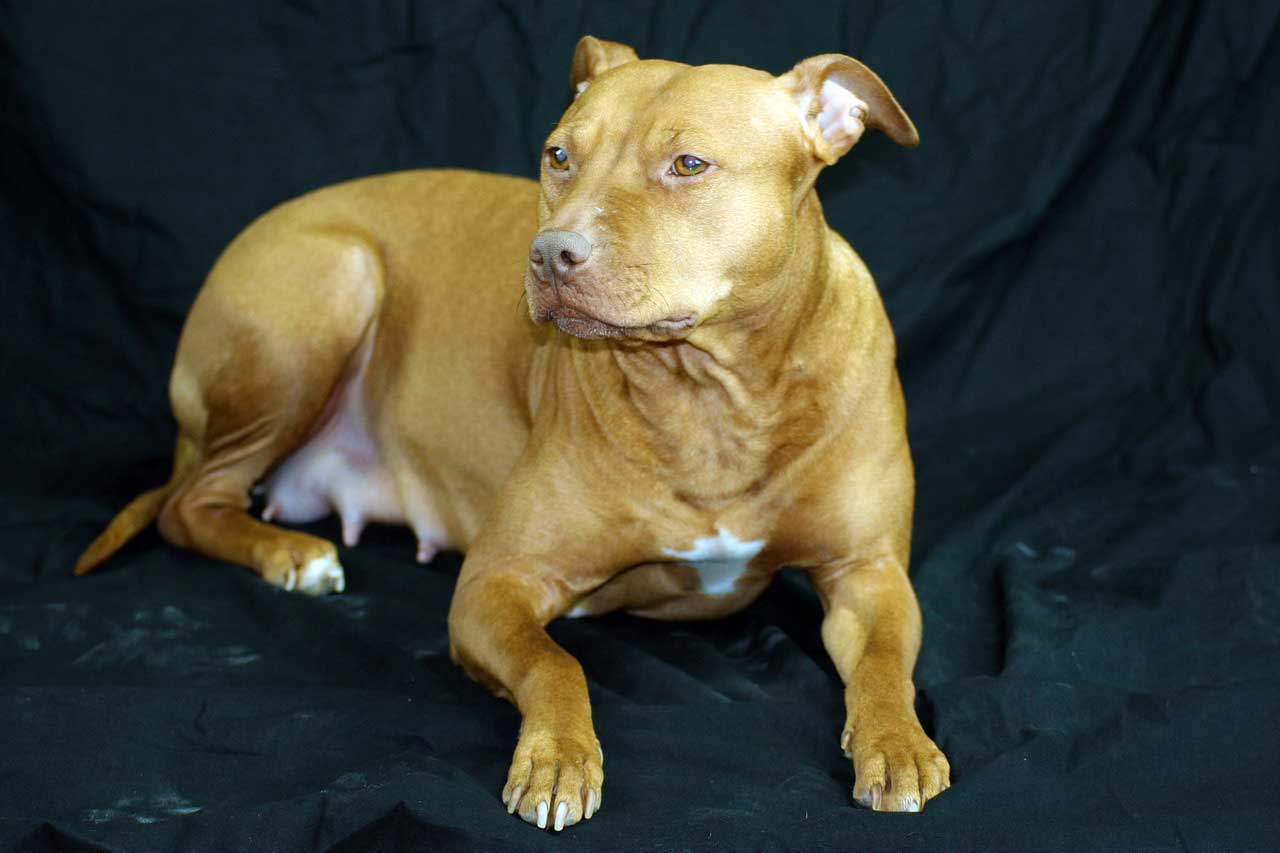
This dog gets a lot of attention for its ability to fight. The American Kennel Club does not recognize the American Pit Bull Terrier but it is recognized by other organizations. American Pit Bull Terriers or APBTs are not to be confused by the American Staffordshire Terrier or American Bull Dogs which are different breeds.
APBTs are in this list because of their athleticism, fearlessness and fighting ability. In terms of fighting, whether it be other dogs or mauling an intruder, the APBT is by far one of the best dogs there is.
APBTs will be excellent at where feral dogs are a problem, as may be the case in post-collapse situations, where feral dogs can be a problem or even a danger. A single pit bull dog will be able to successfully defend you from a pack of feral mutts, which you may encounter as during foraging or exploring. This ability to fight other dogs will be useful if you see yourself in an urban environment. It is useful also they they are fearless even without extensive training. They will defend you and be able to maul even the most physically intimidating human intruders. Having a well-trained APBT can be a great asset in a self-defense situation or even crime prevention. Perpetrators will think twice about victimizing a handler with an intimidating ABPT on the leash.
They may not be ideal for a commune setting due to their history of mauling or even killing other dogs, pets or children, but will be perfect for a small tight knit groups of adults. They are very high energy dogs with high prey drives. They may be a headache for those who raise small livestock such as chickens or rabbits, as some ABPTs may not resist the temptation of chasing them down and giving them a hearty chomp.
Miniature Schanuzer
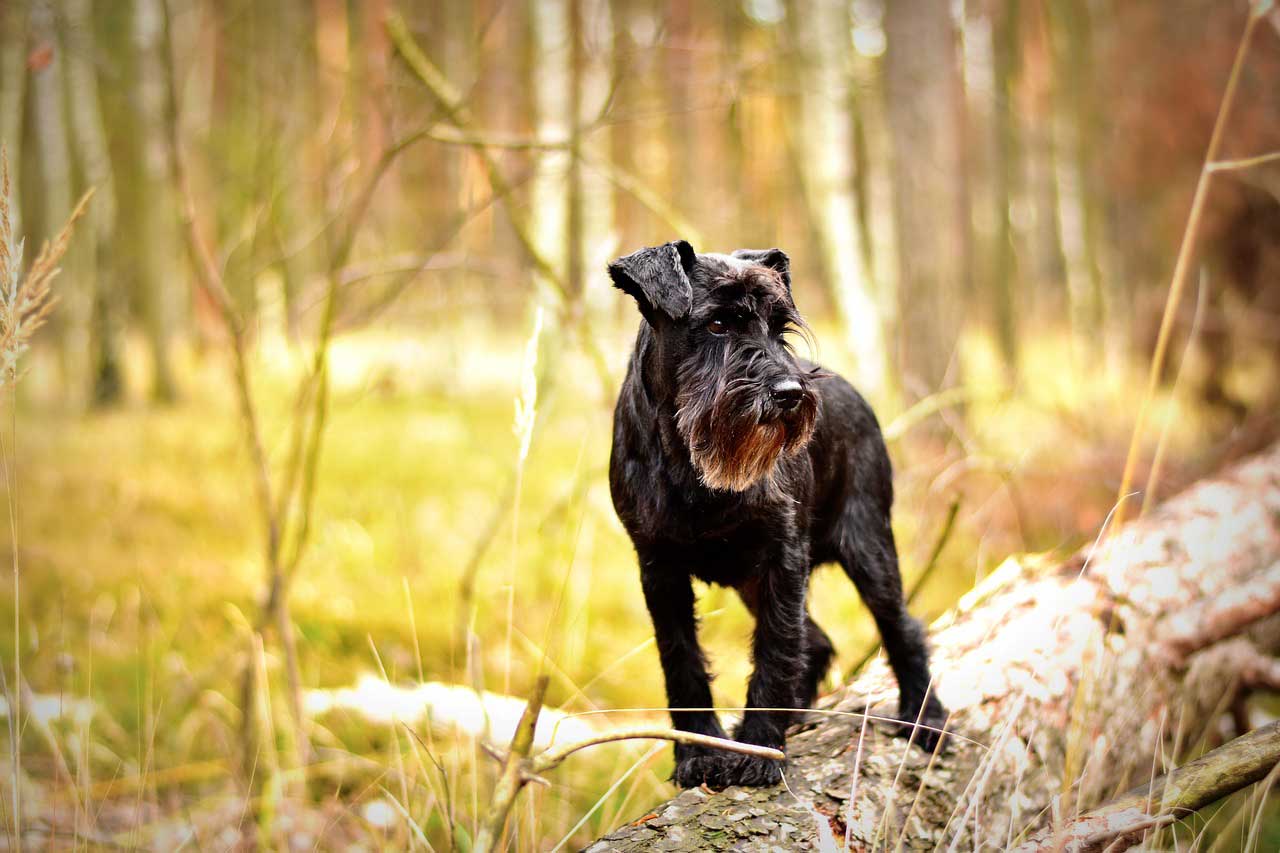
Big dogs many not always be the answer for you. Having a big dogs means you will have to feed it a lot, and living indoors would be a challenge due to the urine and feces they produce. I decided to include a small breed. There are a number of good small breeds that are good for enclosed spaces, but I finally settled upon Miniature Schanuzers. For one, they are ranked in Stanely Coren’s list of dogs as the 12th most intelligent. Also, they are know to be excellent at ratting (hunting rats), which can be a problem for your store your supplies. They aren’t too small to be just toys either.
They do need some grooming, especially their distinctive beard, which tends to get soiled with food, but it is this same bread may offer protection to it during ratting (confusing cornered rats on where to strike). Their dense curled fur doesn’t shed much, which makes them good for indoor living.
Chongqing Dog
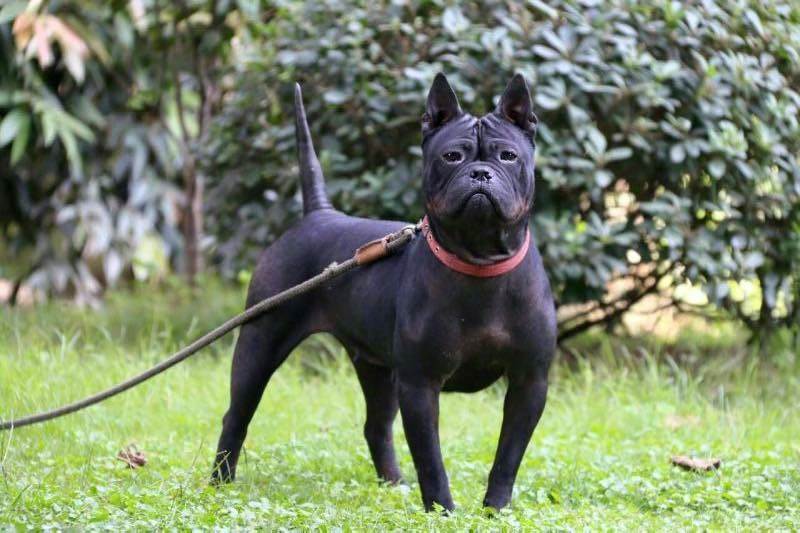
The Chongqing Dog is a breed that has naturally developed in the mountainous regions of Chongqing and Sichuan in the past centuries, if not thousands of years. It is highly aggressive towards other dogs and has a strong tendency to bite, which can be positive qualities in a SHTF or post-collapse situation. It has a penchant for leaving the house and coming home with a gift for its owner, such as a cat or a neighbor’s chicken. Its prey drive will also help in drive rats out of the house.
It isn’t too big, similar to the size of one of the smaller bull dogs, but it’s stocky. This small size means it will not have to eat as much as a GSD or Belgian Mallinois, but it’s big enough to chase and keep big prey or human intruders at bay. It’s short muzzle allows it to do well biting and fighting other dogs, larger game or even people.
With regard to temperature adaptability, this dog excels. It is a very short-haired breed, adapted from the over 40 degree Celsius summer temperatures in Chongqing, and yet it can still be comfortable in light snows.
Given its qualities, this dog will do well for mountain areas, or even abandoned urban areas. They will do well in the temperate, arid or in tropical conditions. If you are somehow able to get your hands on one through a reputable breeder, the Chongqing Dog can be a great asset and raising one can be a discovery in itself.
A word on Hunting Dogs
This list leaned heavily towards all-around working dogs that can also be used for personal protection. However, for the prepper out in the busy or in rural areas, hunting dogs may prove the most useful. There are just so many kind of specialized hunting dogs, that require deep experience with them, that rather than try bluff my way through it, I decided to leave this for the reader’s further research. (If you are experienced on hunting and gun dog breeds, please contact me and I could edit this).
It seems that for every type of game and environment there are dogs that specialize in them. There are water dogs that specialize in water retrieval and and great for waterfowl and duck hunting. The Labrador Retriever stands out in this field. They are also known for its exceptional intelligence. There are dog breeds, such as the Fiest, that specialize in squirrels. There are even dogs that were bred to hunt wild boars like the Dogo Argentino. They are by the way also know for its toughness. There are resources like this list of hunting dog breeds that lists the best dog breed per kind of game.
To fully discuss hunting dog breeds, lot of discussion will also have to go into what kind of hunting dog breed. There are scent hounds, sight hounds, gun dogs, pointers, retrievers, and other kinds. There is also differences whether a dog is a terrier, hound, molosser-type and other kinds. If I tried getting into discussing this, I’d a have to write a book instead of an article.
It was tough choosing the list. I was quite tempted to include the Jack Russel Terrier in the list so there will be a terrier for small ground game and rats, but settled on the Miniature Schnauzer which might be advantageous to a bug-in urban or semi-urban prepper, and it’s a pretty god rat dog as well. This made me decide to steer clear for dogs specifically fo hunting. But for the best all-round dog breeds, the list above is a great place to start.
In Summary, After Thoughts, and Moving Forward…
In this article, I explained what pushed me to write this article, despite there being a number of similar articles. While there are a lot of articles on dog breeds for preppers, I don’t find that any of them are really in depth. I also gave a short spin on how to choose a breed that’s good for your situation and emphasized that while the breed provides the genetic material, the environment and training is a lot more important. Next, I gave an outline how I choose these dog breeds for you, including what resources I used in evaluating them. I paired this with the different situations or conditions you could face. The meat of this article was the list of dog breeds I discussed. With each breed I supplied a brief discussion, and why you might want one.
If you really feel a strong need to include another dog on this list, write to our Editorial Team. In no way does this article cover all the breeds, or even the most representative ones. Nor will I attempt to, since there are just too many breeds and variables out there.
Moving forward, after selecting the breed, you must be sure that you can provide for your dog and care for it. You have to create a plan on how to train it. Each prepper will have their own SHTF plans, and the skills your dogs will need will be different. A dog can be a valuable members of your group or family, if you, as its leader, prepares and trains it well. Dogs have evolved to man’s most valuable companions for millenia, helping man hunt, guard and fight. It seems that dogs can be valuable companions for the next coming millenia as well.

